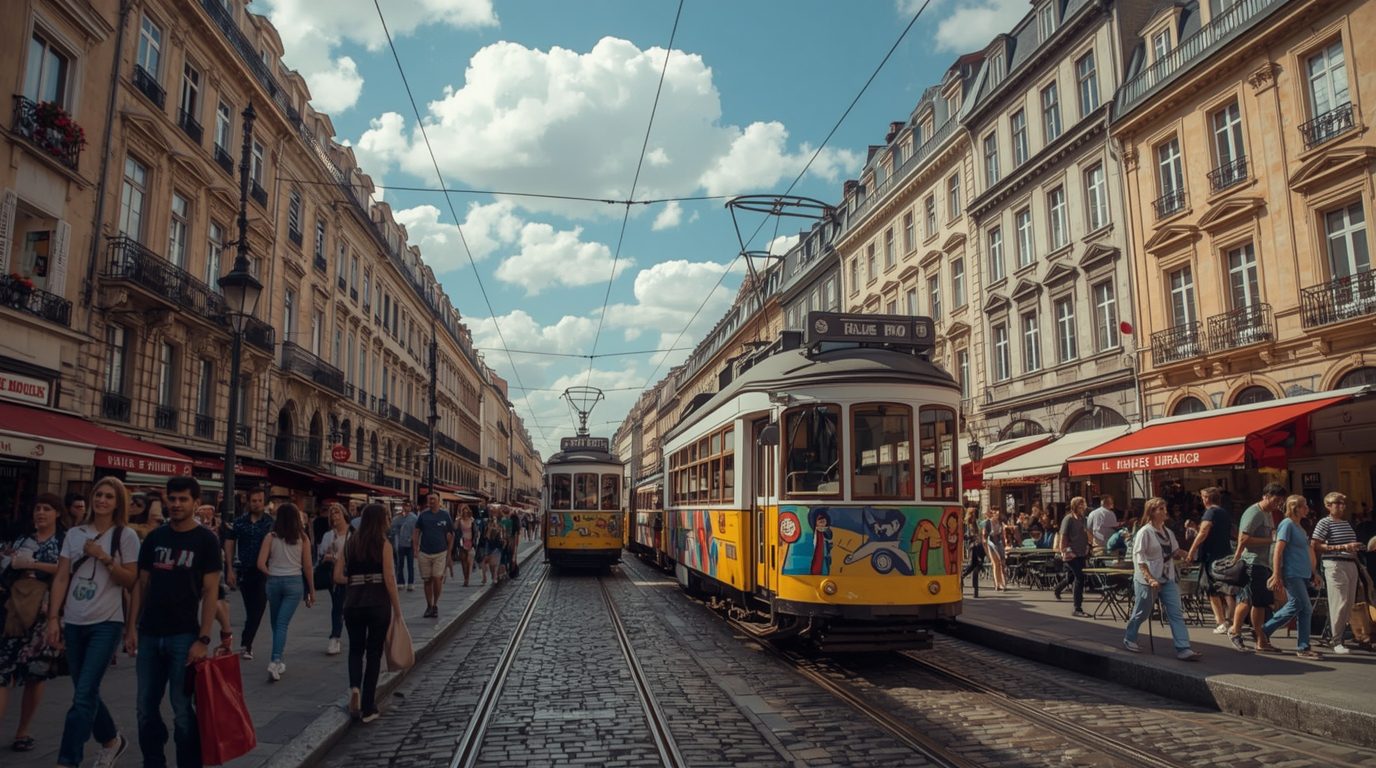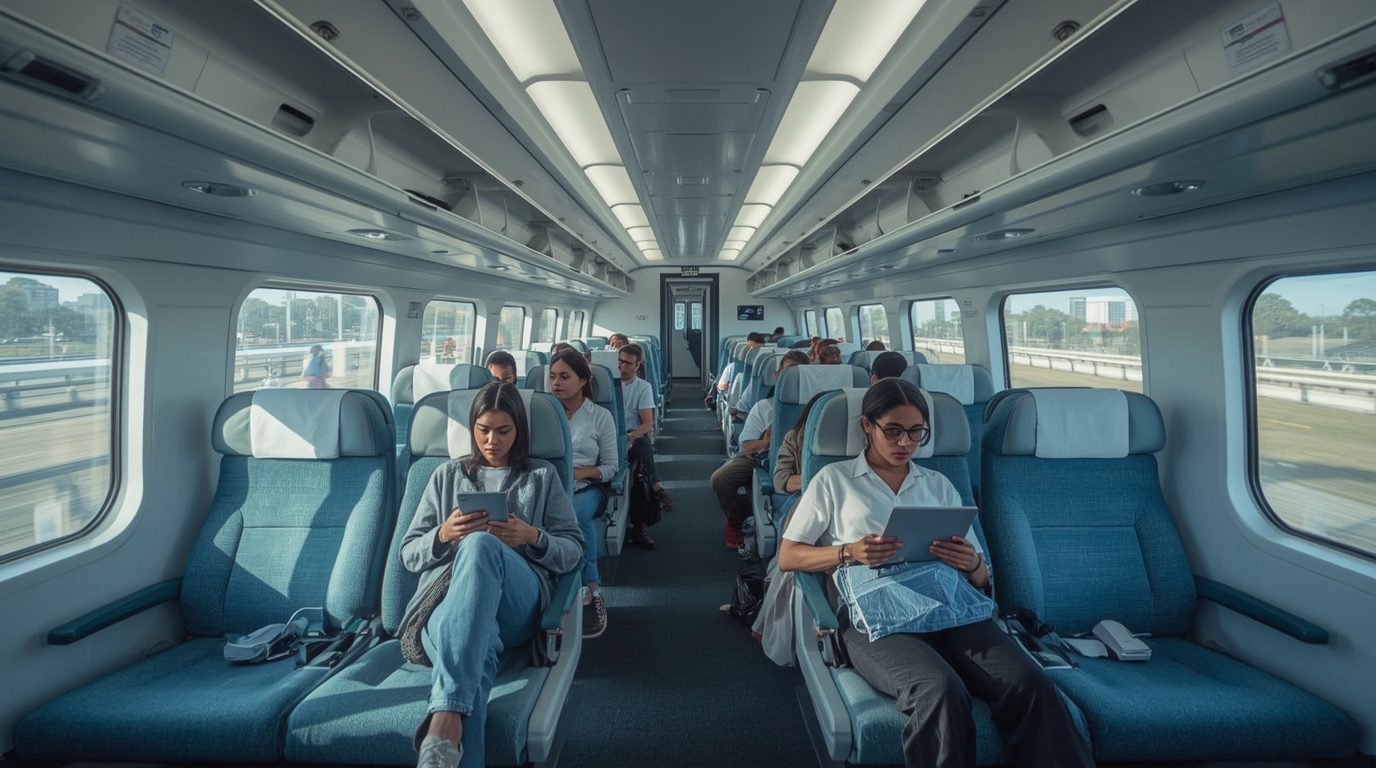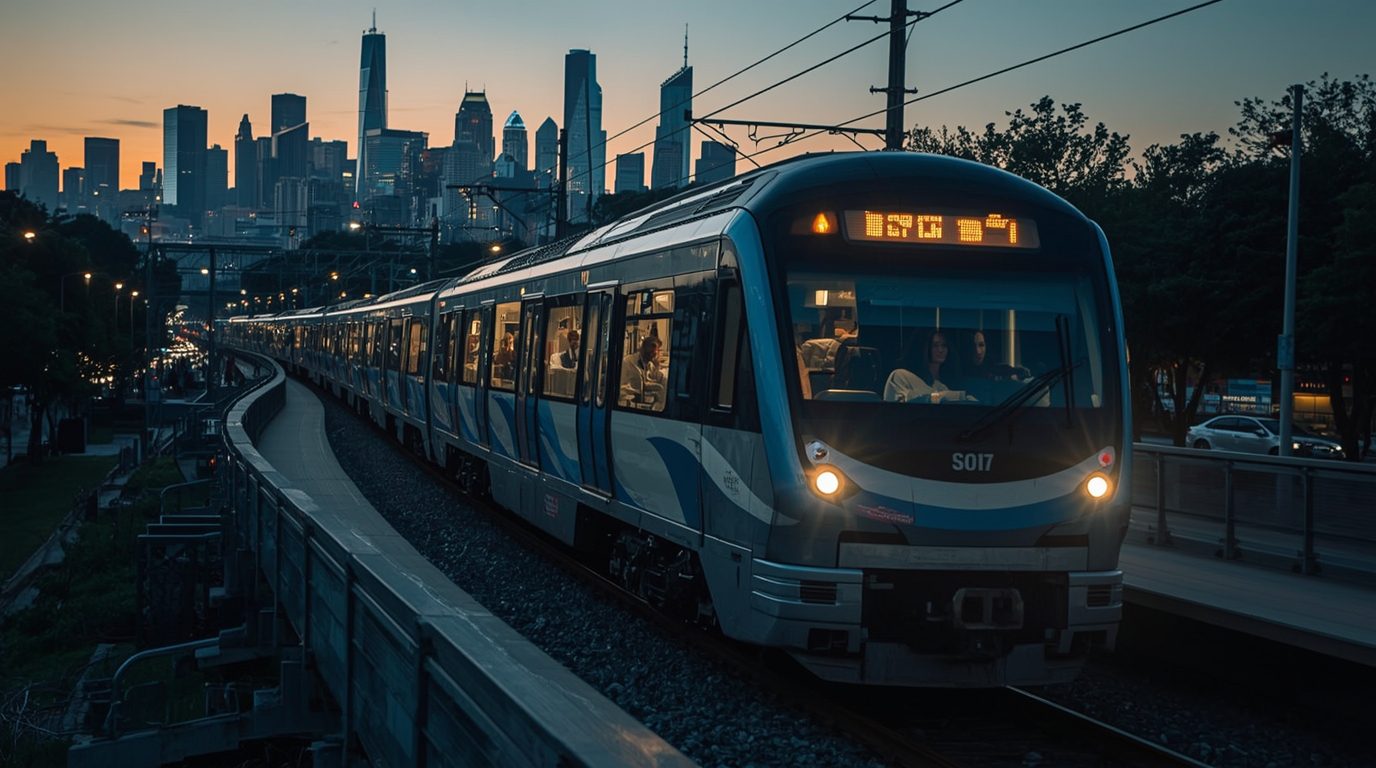Edmonton Receives Its First Hyundai Rotem LRV Light Rail Vehicle For The Valley Line West Extension
Hyundai Rotem’s light rail vehicle (LRV) for the Valley Line West expansion has been equipped to Edmonton’s transit network. The vehicle was revealed on August 6, 2025, and indicates the addition of 27 kilometers of light rail track, which will interlink neighborhoods, commercial districts, and cultural centers while ensuring transit is available the metropolitan area.
The LRV is the first of 46 units which are proposed to be deployed for the Valley Line West project, and is an investment towards the province’s modern public transportation initiative. This initiative will also help reduce traffic, highlighting Edmonton’s sustainable transit approach. Neon Report
Edmonton’s LRT System Expands with an Added Focus on Accessibility & Eco-Friendliness
With the addition of 26 Alstom LRVs serving the Rotem facility, Edmonton now operates with a mixed fleet of Hyundai Rotem LRVs and Alstom LRVs which will be beneficial for a growing set of riders. Each Rotem LRV vehicle encases seven doors, all level stepless entry, making it easier for the elderly, parents with strollers, and people with wheelchairs to board. The accessibility features of the vehicles would also be beneficial for reducing peak hour congestion.
The addition of the southwest line will connect dense residential neighborhoods and commercial zones with schools, cultural centers, and institutions. The newly added Rotem vehicles would help in the reduction of commute lengths and relief in traffic congestion. Furthermore, reduced vehicle congestion means more than one town can be crossed on a single tank of gas, allowing Edmonton to be more ecologically sustainable.
Testing, Assembly, and Delivery
The newly purchased LRV would need to be tested along with the Rotem Hyundai LRVs which would be designed and manufactured in two sections, which allows for easier and less dangerous shipping. After the completion of shipping to the port in Tacoma on July 20 2025, Edmonton would be in possession of the parts which need to be pieced together, allowing for the LRV and Rotem vehicle to be fully assembled.
After assembly, the vehicle will go through extensive on-track testing, and the electrical systems, signaling, brakes, passenger systems, and propulsion systems will be checked. The remaining 45 LRVs are expected to be delivered gradually through 2027. Each one will be able to withstand Edmonton’s harsh sub-zero winters and hot summer days, while providing reliable service throughout the entire year.
Technological Innovations and Passenger Experience
The new vehicles from Hyundai Rotem are designed with passenger comfort, convenience, and accessibility in mind.
Interior elements include:
- Plush seating with increased legroom for added comfort on long hauls.
- Ambient LED lighting and panoramic windows for a bright and welcoming atmosphere.
- Hearing loops and tactile guidance tiles for users with sensory impairments.
- Wheelchair accessible with wide doors and step-free entry for strollers and large luggage.
- Bikes welcomed, with provisions for up to 100 bicycles per vehicle, aiding in first and last mile connections.
The design focuses on speed, safety, and inclusivity, which will be beneficial for a wide range of users, students, families, employees, and travelers. Digital displays on the vehicle show the current location and connections, as well as providing service updates. The climate control systems throughout the vehicle ensure passenger comfort during extreme seasonal temperatures.
Improving Public Transit and Mobility in the City
The Valley Line West expansion is more than just a construction project; it is a project aimed at transforming mobility in Edmonton and its surroundings. This project enhances connectivity between neighborhoods and encourages a shift away from private vehicles. This, in turn, helps in reducing traffic congestion and improving air quality.
He added the more meaningful statement during the development of the Valley Line West project:
“This line will reshape how we move, develop neighborhoods and relate to one another. It’s about a city that is accessible, green, and full of life.”
The expansion is also aimed at promoting Transit Oriented Development (TOD), which encourages the development of walkable neighborhoods, high-density housing around and near transit stations, and better integration of commercial and cultural spaces. This also links key economic, boosting local business activity and tourism while further positioning Edmonton as a model city for sustainable urban planning.
Economic and Environmental Benefits
The economic benefits expected from the Valley Line West include:
- The construction is expected to raise property values in transit corridors.
- Increased business activity in areas near public transit stations.
- Creation of new jobs in construction, operations, and maintenance.
From an environmental standpoint, the use of electric LRVs aids Edmonton in achieving its carbon reduction goals by eliminating trips that would have emitted greenhouse gases. The investment shifts the balance of emissions in the region further by replacing diesel buses and cars, solidifying Edmonton’s position as a green, sustainable transit infrastructure leader.
Impact on Community and Access
Edmonton residents can realize improvements in daily life with the use of LRVs. Students can access schools and universities more quickly, families can visit parks and cultural landmarks, and seniors can enjoy step-free, low-floor boarding. The line enhances social equity by improving access for underserved neighborhoods.
Community engagement has been a central focus for the Valley Line West project. Authorities have held public consultations and collected input on station design to include safety, security, and accessibility enhancements. These actions demonstrate a commitment to community-driven transit design and planning.
Assembly, Testing, and Operational Readiness
After shipping, the first LRV was tested thoroughly with the brakes and traction systems checked at the Gerry Wright facility in Edmonton, which included:
- Stop accuracy at designated stations
- Electrical and signaling systems integration
- Testing of passenger systems such as lighting, climate control, and the real-time information display systems
- Functions and trials
- Systematic and in-sequence checking
These evaluations and trials confirm that the vehicles are safe and reliable prior to revenue service. The remaining 45 LRVs are scheduled for delivery in phases up to 2027, which will coincide with the full opening of the Valley Line West corridor.
Looking Ahead: 2040 and Beyond
The design of the LRVs have the capacity for incorporation of future developments, which will link the urban core to walkable suburban neighborhoods. The integrated systems will provide real-time data on crowd levels and climate conditions which can be used to control service intervals, maintain schedules and adjust to extreme weather, and enable long-term planning for ridership.
That kind of planning lets Edmonton and the region prepare for future urban growth, changing commuter dynamics, and new transportation technologies. This investment in LRVs improves service offerings and builds a transit system that can adapt for decades.
Safety and Operational Features
The Valley Line West Expansion prioritizes safety, with the new LRVs featuring:
- Safety-critical systems for the avoidance of collisions with other vehicles, advanced signaling, and communication technologies.
- Emergency stopping procedures and exits.
- Systems for detecting and putting out fires.
- Security cameras for passenger safety.
Furthermore, the sturdiness of the bus protects it from damages caused by extreme weather and heavy usage. The bus’s low and wide doors aid in quick passenger evacuation in case of emergencies.
Connection with Edmonton’s Transit Network
Valley Line West will integrate with Edmonton Transit Service (ETS) bus and train routes, as well as Valley Line Southeast. Connecting bus and train lines will save commuters time, streamline multi-modal transportation, and make public transport more attractive for everyday users.
Also, the line supports multi-jurisdictional transit integration, allowing users from adjacent municipalities to easily reach downtown Edmonton, which strengthens economic and cultural relationships across the capital region.
Summary
The first Hyundai Rotem light rail vehicle signals an important step in Edmonton’s transit evolution. These LRVs will greatly enhance transit for Edmonton users of all ages and abilities by offering safe, comfortable, and eco-friendly travel with the convenience of modern amenities and low-floor access.
Edmonton will receive the last of its LRVs and the Valley Line West will be fully operational in 2027. This will allow Edmonton to fully integrate its public transit network, increasing speed, reliability, as well as providing eco-friendly transit services throughout the city. The project reflects the eco-friendly, community-driven urban transit vision which will position Edmonton as one of the leaders in urban transit.
To learn about Edmonton’s sustainable urban development innovations and transit updates, visit Neon Report.




